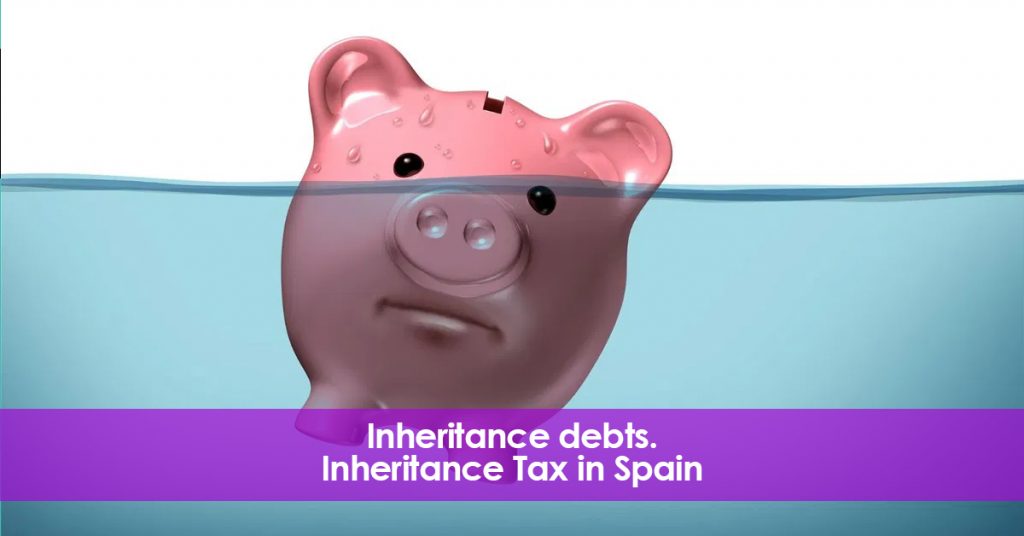When someone passes away, it is very important to remember that heirs will not only receive the assets left by the deceased. They will also inherit, except in certain cases (acceptance of inheritance with benefit of inventory), the debts that the deceased may have incurred during their lifetime. This is a crucial aspect that many people overlook. Therefore, having a clear and precise understanding of the deceased’s assets and debts is essential. In this article, we analyse inheritance debts in the Inheritance Tax in Spain. What they consist of. How to quantify them. And how they should be managed to avoid problems.
Debts and expenses that can (and should) be included in an inheritance.
In Spain, the following expenses, costs and debts are considered tax deductible when presenting the Inheritance Tax Declaration:
.- Funeral expenses, meaning burial, funeral, and related costs.
.- Tax or social security debts.
.- Medical and hospital expenses related to treatment connected with the cause of death.
.- Personal loans.
.- Credit card debts.
.- Debts with suppliers or companies.
.- Etc.
According to case law, the IBI (Property Tax) debt corresponding to the year of death would be considered a deductible debt.
Debts and expenses that cannot be deducted in an inheritance.
Expenses related to real security rights (such as mortgages or pledges) cannot be included as deductible expenses, as they do not reduce the value of the property in the event of transfer. Expenses related to executors or solicitors’ fees would also not be deductible, except in cases where the succession is contentious. In such cases, legal fees could be deductible.
Contrary to what many people think, residential expenses are also not considered deductible, as they are not medical but rather care-related. However, if there is an outstanding debt owed to a care home, it could be considered a debt of the deceased.
Finally, food, drinks, and celebration expenses (such as dinners or social events, which are common in some countries) are also not deductible in the Inheritance Tax.
What happens with Tax Debts that may arise after the inheritance?.
It is very common for heirs to know that there will be a significant tax debt left by the deceased, but for this debt not to be quantified at the time of accepting the inheritance. A typical example would be the following: a person sells a property in February 2024, generating a significant capital gain, and passes away a few months later. That capital gain will have to be declared in their income tax return of 2025. Creating a tax debt that the heirs will need to handle.
Since the deadline to settle the inheritance tax is 6 months, it is possible that the exact amount of the tax debt will not be known until much later. In these cases, it is common to file the inheritance tax self-assessment without including this tax debt. Once it has been quantified, the following year, an amended inheritance tax return can be submitted. Formally declaring the pending debt and requesting, if applicable, a refund or corresponding adjustment.
Conclusions.
Correctly managing inheritance debts is essential to avoid problems with the Tax Agency. At White-Baos Lawyers, we provide specialized advice on inheritance and tax law. If you need help with an inheritance, wish to understand which debts are deductible or which are not, do not hesitate to contact us.
The information provided in this article does not constitute legal advice but is intended for general informational purposes only.
Carlos Baos (Lawyer)
White & Baos.
Tel: +34 966 426 185
E-mail: info@white-baos.com
White & Baos 2025 – All Rights Reserved.
